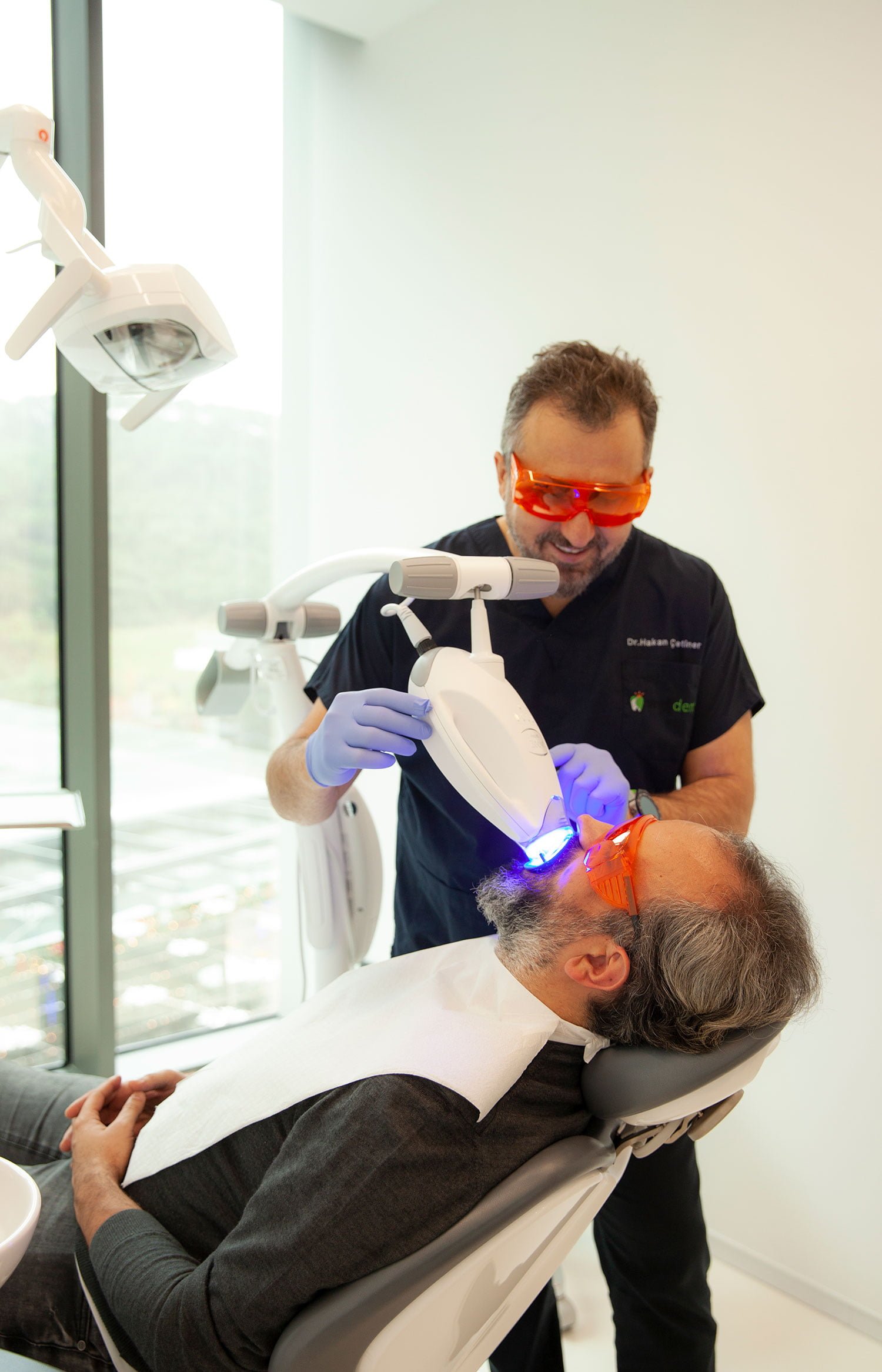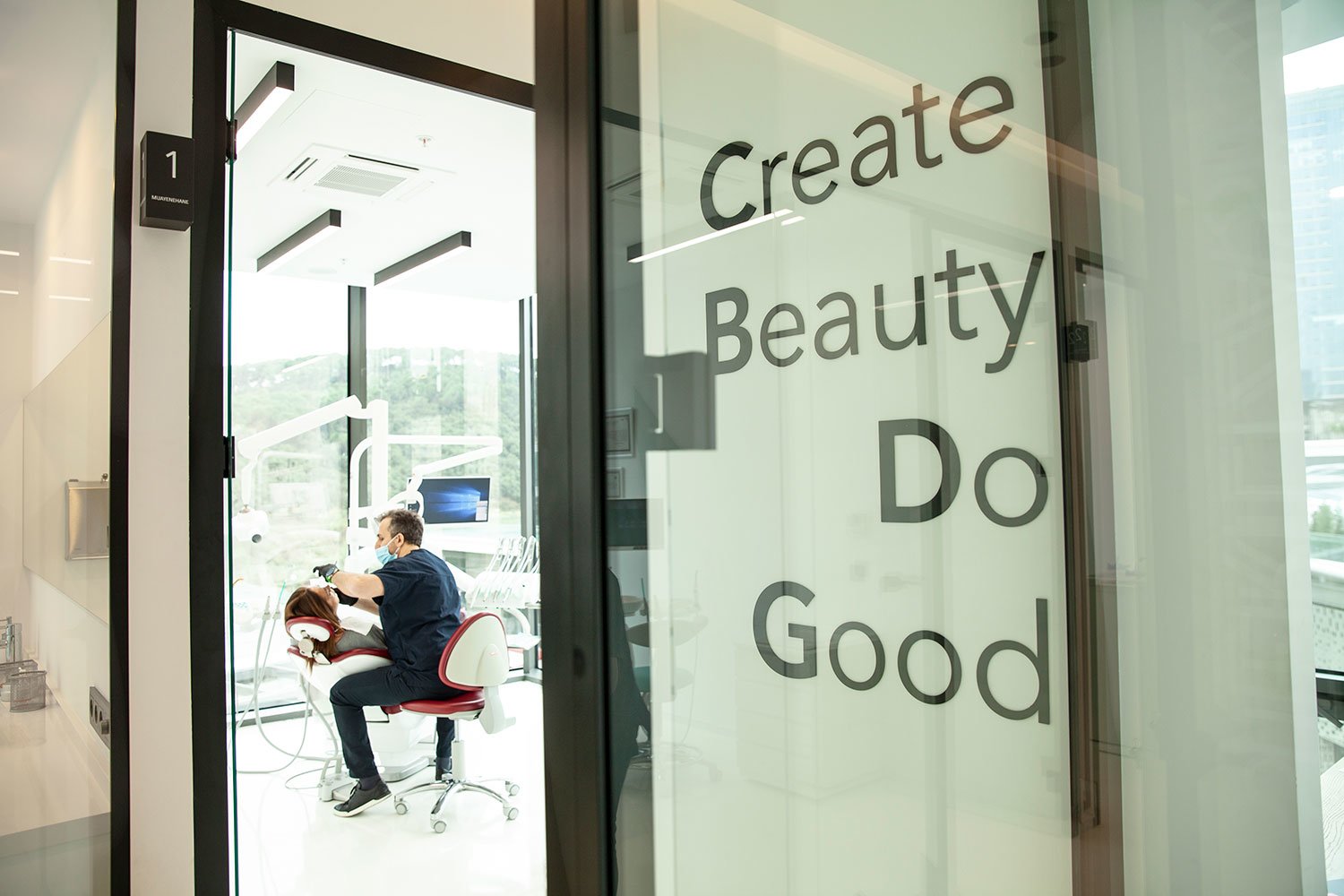

Prosthetic
Dental Treatment
In dentistry, the term prosthesis refers to the replacement of teeth and surrounding tissues lost for various reasons with artificial restorations. The branch of science dealing with the subject is called Prosthodontics, and dentists who have completed their doctorate or specialty education in prosthodontics are called Prosthodontists.
With prosthetic dental treatment, the patient’s lost function (chewing), speech, and aesthetics are restored while the psychological problems that develop due to tooth and tissue loss are eliminated with prostheses. One of the most important goals of prosthetic treatment is to preserve the health and integrity of the remaining teeth and tissues.
Prosthetic dental treatment provides a wide range of services depending on the amount of tooth and tissue lost and the patient’s expectations.
Prosthesis Types
- Fixed Prostheses
- Removable Prostheses
- Implant Prostheses
- Maxillofacial Prostheses
1.Fixed Prostheses:
They are referred to as Crown and Bridge Prostheses. They are prostheses that cannot be removed by the patient.
A. Crown prosthesis:
After filling restorations with insufficient tooth tissue support, implants are used as a superstructure by covering the top of the tooth that is reduced for reasons such as correction of form and discolored teeth.
B. Bridge prosthesis:
In cases where one or more teeth are missing, prostheses are made by reducing the teeth next to the area where the gap is located and using them as support.
C.Restorations without Metal Support:
Today, the increase in aesthetic expectations has increased the use of restorations that do not use metal alloys in their infrastructure. They are frequently used due to their good biological adaptability and superior aesthetic properties.
a.Empress crowns:
Instead of prosthetic metal substructure, empress cores with good biological compatibility and very good aesthetic properties that reflect light like natural teeth are used.
b.Zirconium Restorations:
Zirconium oxide has high resistance. Porcelains with zirconium oxide substructure do not cause gingival problems and allergies, and have aesthetics and durability close to natural teeth thanks to their light transmittance.
D.Laminate Restorations:
In the presence of color, shape, and size defects in the teeth, these restorations are applied by bonding leaf-shaped porcelain as a result of some abrasion of only the front surfaces of the teeth.
2. Removable Prostheses:
A.Complete Dentures:
These are tissue-supported prostheses applied to patients who have no teeth in their mouth.
B. Partial Dentures:
These are prostheses made with the support of both teeth and tissues in the presence of teeth that cannot support fixed prostheses in the mouth. They are inserted and removed by the patient. In cases where the crochet arms are thought to negatively affect the aesthetics, Precision Grip Prostheses are made. There is a wide range of precision connection types.
3.Implant-Retained Prostheses:
These are prostheses made with the support of implants instead of natural teeth.
A.Fixed Implant-Retained Prostheses:
They are single-member or bridge restorations supported by one or more implants. The substrate can be metal alloy or ceramic.
B. Removable Implant-Retained Prostheses:
They are both implants supported by 2, 3, or 4 implants and prostheses supported by tissues.
C. Semi-Removable (Hybrid Prostheses):
It is a type of prosthesis that cannot be removed by the patient and can be removed by the physician when necessary.
4.Maxillofacial prostheses
These are prostheses made to provide aesthetics and function in large defects caused by tumor surgery, congenital anomalies, trauma, etc.
Our Specialties
Our customers are our priority, and we offer quality dental services with a team of experts. Learn more about our services.
Vadi İstanbul 2A Ofis Ayazağa Mah. Cendere cad. No:109/1 D:27 Sariyer

